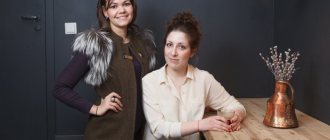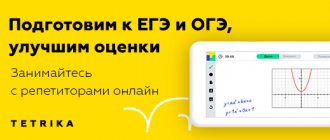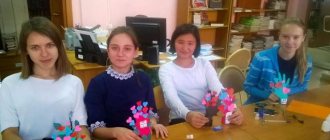Download material
so UNT / Educational work / Biology
Extracurricular activity in biology 8th grade within a decade. Game "World of Anatomy"
01/04/2015 7993 1074 Shipilova Olga Viktorovna
Target
: Increasing the efficiency of the educational process, increasing the interest and activation of students in the subject “biology”
Tasks
Educational: students -
are able to recall previously learned material in memory;
- use their knowledge in a specific practical situation;
- broaden horizons;
Developmental: students
—
analyze, generalize, use theoretical knowledge to solve practical problems;
- draw conclusions about the significance of anatomical knowledge;
— develop independence, attention, memory, logical thinking, creativity of students;
Educational:
students
-
increase biological culture;
- show interest in studying the structure of their body, which contributes to the inculcation of sanitary and hygienic standards and a healthy lifestyle;
- learn to defend their opinion;
— know how to take responsibility for the fate of the team;
- willing and able to work in groups;
Equipment and materials
: presentation, human skeleton, models of internal organs, dummies, posters.
Progress of the event
Two teams.
For each correct answer of the team, one point.
1. Warm-up “Question and answer”
1.
Organs - the location of the central nervous system (
skull, spine
).
2.
Red bone marrow is the place of formation of….(erythrocytes)
3.
The spine has……curves (4).
4.
Digestion center in the brain
(medulla oblongata
)
5.
In which blood vessels the pressure is maximum (arteries).
6.
The body's response to irritation (reflex)
7.
Carrier of oxygen in the blood. (erythrocyte)
8.
The main respiratory organ (lungs).
9.
The next section of the trachea (bronchi)
10.
Lung, consisting of 2 lobes (left).
11.
Vessels that carry blood from the heart (arteries).
12.
Appendix - appendix (cecum)
13.
The youngest tooth in a person (wisdom).
14.
Name of vitamin C (ascorbic acid).
15.
The top layer of skin (epidermis).
16.
Hormone that regulates blood sugar (insulin).
17.
Person giving blood (donor)
18.
Movement coordination center (cerebellum).
19.
The main function of the alveoli is gas exchange.
20.
The center of vision is in the cerebral cortex (Occipital lobe of the cerebral hemispheres).
21.
Color image receptors (cones).
22.
Vitamin B deficiency leads to disease (beriberi).
23.
Platelet function (blood clotting).
24.
Rhythmic oscillation of arterial walls (pulse)
25.
How many membranes does the heart have (3)
26.
Person receiving blood (recipient)
27.
The scientist who discovered phagocytosis (I.I. Mechnikov)
28.
Universal recipient (person with 4 g of blood)
29.
Scientist who studied the action of gastric juice (Pavlov)
30.
Universal donor (person with 1 g of blood)
2. “Do we know our body?”
Students from each team come out and choose tokens with numbers. There are numbered organ models on the table. Depending on which organ you got, it is described according to the following plan
:
1. Which system does it belong to?
2. Location in the human body.
3. Structure.
4. Functions.
3. “Guess
the organ”
The characteristics are read to students, and they must determine which organ they are talking about. If the organ is not identified, then a hint is given, but 5 points are deducted.
1. a) This organ is a link between organs in which one has a slightly alkaline environment and the other has an alkaline environment. The internal surface of this organ is ... cm3. Exocrine glands open there. (15b)
b) The volume of this organ is 1 liter. It has a lesser and greater curvature, as well as cardiac and pyloric parts and a bottom. (10b)
c) The walls of this organ contain cells that secrete digestive enzymes and produce hydrochloric acid (HCl), which is 0.5%. (5 B)
(Stomach)
2. a) This organ consists of 16-20 cartilaginous half-rings. (15b)
b) The posterior system of this organ is soft from connective tissue containing smooth muscles for the best passage of food. (10b)
c) This organ at the level of the 5th thoracic vertebra is divided into two bronchi that go into the lungs. (5 B)
(Trachea)
3. a) This small organ is located in the main gland of the digestive system and has an alkaline reaction. It does not contain digestive enzymes but performs a variety of functions related to digestion. (15b)
b) The main functions of this body:
1. activation of the action of all digestive enzymes;
2. increased secretion of pancreatic juice;
3. performs a barrier function. (10b)
c) The contents of this organ are yellowish-green in color due to the content of the pigment bilirubin. (5 B)
(Gallbladder)
4. a) This is part of an organ consisting of 5 sections. It is covered with a white substance on the outside and gray on the inside and performs reflex and conductive functions. (15b)
b) It is called the “high road” or “telephone switchboard”. (10b)
c) It is the center of breathing, cardiac activity, unconditioned food reflexes, as well as protective reflexes (coughing, sneezing, lacrimation, vomiting). (5 B)
(Medulla)
5. a) The body of this element consists of only one cell. In “youth” it has a nucleus, but in “old age” it is nuclear-free. It can be called a “traveler” of the human body. (15b)
b) It is formed in the red bone marrow, but can also be formed in the appendix and has a cake-like shape. (10b)
c) Its main function is oxygen transfer. (5 B)
(Erythrocyte)
6. a) These are biologically active substances that enter the body with food, but some can also be synthesized by the human body. (15b)
b) Their main function is the regulation of metabolism. (10b)
c) They are fat-soluble (A, D, E, K) and water-soluble (B, PP, C). (5b) (Vitamins)
4. “Memory development.”
On the table there should be pre-prepared sheets of paper, colored markers and a card with the task “where is the center of visual memory in the cerebral cortex.”
Two students from each team are called and tables consisting of colored geometric shapes are distributed. Students are allowed to watch 20s, with a break of 5s. Then you need to depict what you saw on paper and answer the question asked.
P.
S. While they are working there is a game going on with the spectators
"Did you know..."
1.Teacher.
Did you know that in Ancient Greece, when friends met, they asked each other. “How are you sweating?”, because Charging was a common thing.
Question
.
Is it better to move more to sweat more or move less to sweat less?
Answer
.
a) decay products are removed through the skin;
b) the more a person moves, the better developed and healthier the body is.
2. Teacher
. Did you know that some experts believe that the more a person wears a hat, the faster the person goes bald, because... the scalp can't breathe.
Question
With.
Then give an explanation for this statement that in cold weather you cannot walk without a hat.
Answer.
In cold weather, the superficial vessels of the scalp narrow, and the nutrition of the hair roots is disrupted, and due to this, hair growth worsens, which leads to early baldness.
3. Teacher
. Did you know that a person in the dark can see a flame of light at a distance of more than 1 km. Human visual acuity is the same as that of an owl, but 4 times worse at night than that of a cat, but 4 times better during the day than that of the same animal.
Question
.
What determines a person’s good vision during the day and relatively at night
? Answer
.
The content of rod receptors in the retina of the eye regulates human vision in the dark, because
they are the most sensitive, and cones, because they regulate a person’s vision during the day and sense of color. 4
Teacher
.
Did you know that until 6-7 months of age, a child does not distinguish colors and sees everything in gray tones.
Question
.
Why?
Answer.
The parts of the brain that regulate color vision are still poorly developed.
1. Teacher
. Did you know that some part of the peripheral nervous system was called the abdominal brain by the ancient Greeks?
Question
.
What is it about?
Answer.
We are talking about the “solar” plexus, located in the abdominal region, which is the center from which nerves extend in rays to almost all organs of the abdominal cavity
6.
Teacher
. Did you know that there are up to 450 million alveoli in the lungs.
Question
. Why are there so many alveoli in the lungs and what is their role?
Answer.
Gas exchange occurs there, and also the process of phagocytosis to disinfect the air.
5. “Troubles from a barrel.”
1. These wonderful fruits can be found in every garden. They are useful in all respects: they contain acids that fight putrefactive bacteria in the stomach; they contain a substance (quercetin) that prevents the growth of cancer cells; they are very useful for the functioning of the cardiovascular system. Doctors advise eating these fruits every day for an afternoon snack to get all the necessary microelements. What kind of fruit is this? (Apples)
2. This vegetable is a treasure trove of all vitamins, minerals and microelements and protection against all diseases. It improves the functioning of the liver, thyroid gland, and treats colds. We add it to almost all our dishes every day. This product contains a lot of healing substances - phytoncides, which destroy microbes. The juice of this plant is used to treat a runny nose, and if you rub it and put it on your heels at night, then in the morning there will be no cold. The medicinal properties of this vegetable do not disappear even with heat treatment. ( Onion)
3. This vegetable is also strong in the fight against colds. In addition, it restores order in the stomach and kills harmful microorganisms. It is very useful in its raw form, but its pungent smell interferes with communication with people. (Garlic)
4. This orange root vegetable is rich in vitamins and minerals. But it is especially rich in vitamin A. This product is very useful for vision and also prevents the development of cancer, especially skin cancer. This root vegetable is best consumed raw, because after cooking it loses many useful substances. (Carrot).
5. In its purified form, this product is similar to the human brain, so it is believed that it (increases strength and memory). It is also good for the heart, for vision, for metabolism (Walnut).
6. This seafood product is a source of valuable protein and can easily replace
meat. For the Japanese, this is a staple food product, which makes them champions of longevity. But in addition to protein, it contains a lot of phosphorus, which is responsible for the kidneys and bones. (Fish).
7. This animal-based drink is a must-have from your first birthday. It contains protein, fat, calcium, which strengthens bones. (Milk).
8. This tropical fruit has healing properties: it relieves stress, replenishes lost strength, increases the level of hemoglobin in the blood, provides the brain with oxygen, and improves heart function. It contains a huge amount of vitamins A, B, C. But those who are worried about their waistline should not get carried away. It has a lot of calories. (Banana).
6. “Explain the process.”
1.Inflammation caused by a splinter
2. Blood clot formation
7. “Find a connection.”
Each team is given cards with a chain consisting of links. It is necessary to draw up a logical chain in some cases to add. The competition is assessed on a 3-point scale.
1.
Vitamins - skin - rickets. (Vitamin D is formed in the skin; with hypovitaminosis, rickets develops).
2.
Carrot - eye - night blindness. (Vitamin A is involved in photochemical reactions in the retina. Hypovitaminosis leads to night blindness).
3.
Insulin-glycogen-diabetes mellitus
.
(Under the influence of the hormone insulin, blood sugar is deposited in the liver and muscles in the form of glycogen. With hypofunction of the pancreas, diabetes mellitus develops).
4.
Teeth-lips-tongue
……(sound).
5.
Voice is sound…..(
vocal cords
).
6.
(Leukocytes)
……lymph nodes - phagocytosis.
The jury's word. Summarizing. Awards
See the downloadable file for the full text of the material.
The page contains only a fragment of the material.







